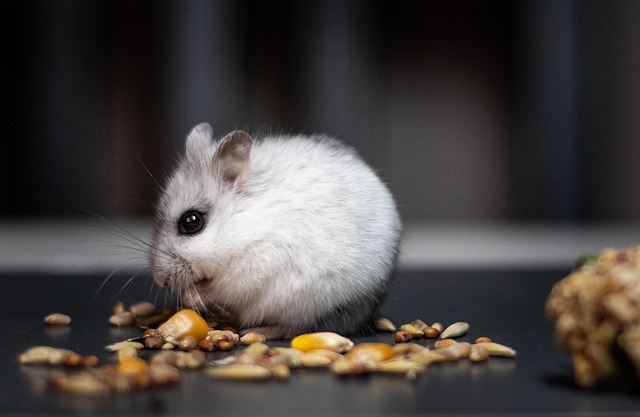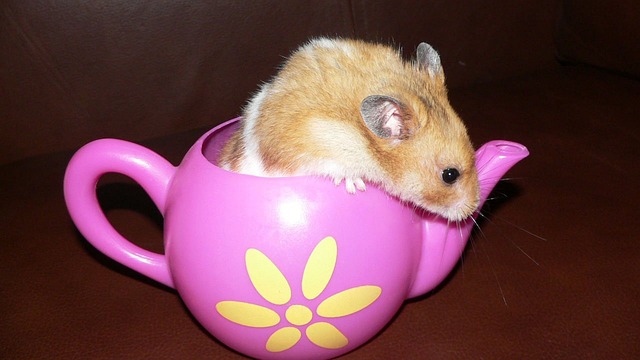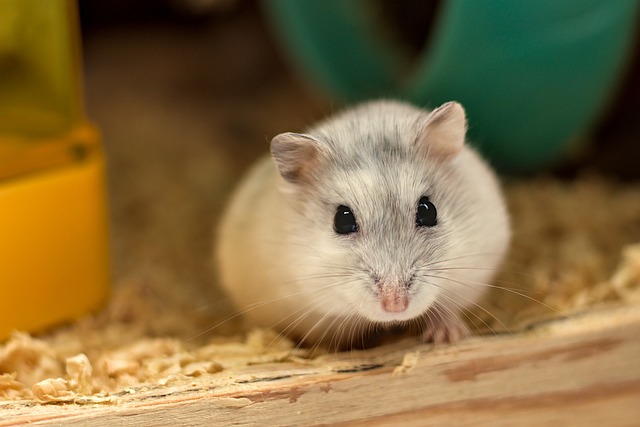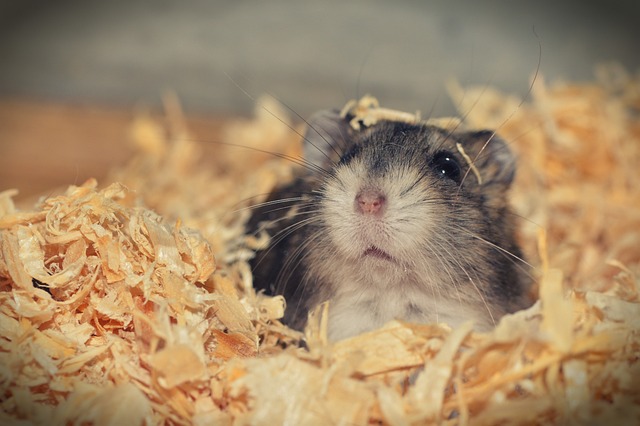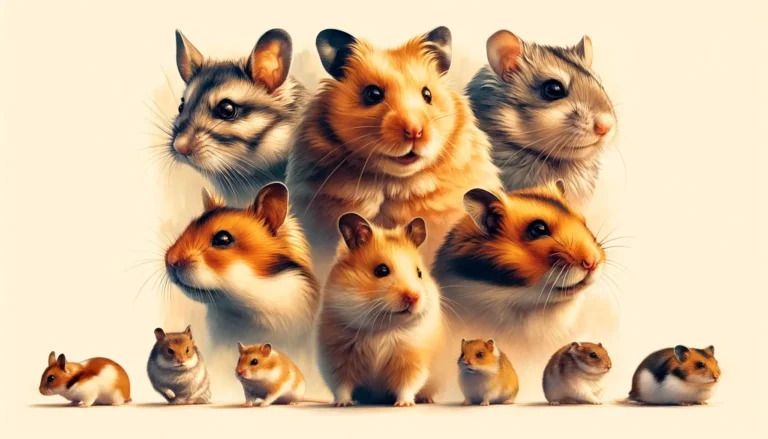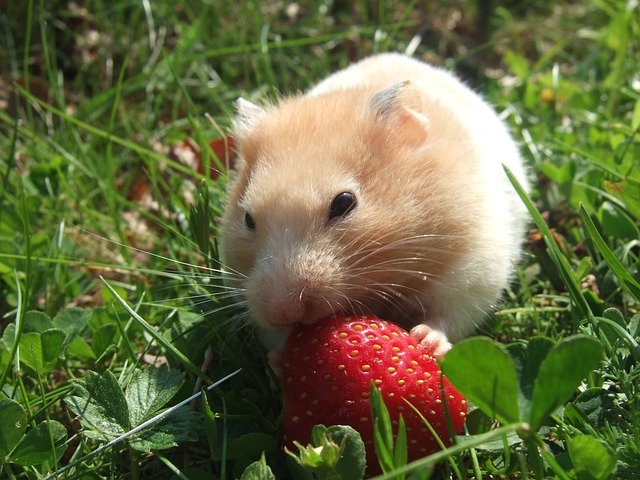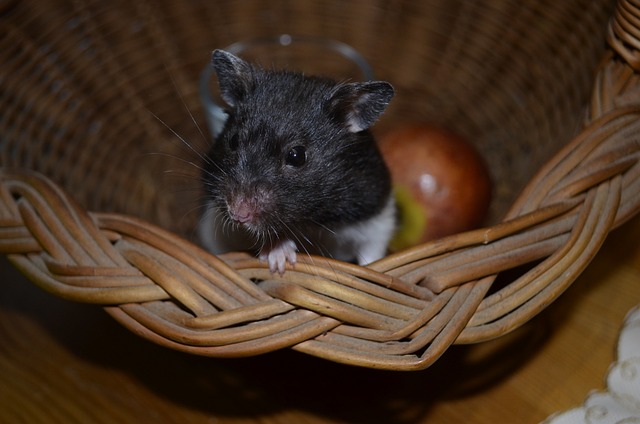Are Hamsters Better Pets Than Rabbits – Hamsters.pk
Size and Space Requirements: Comparing the Living Needs of Hamsters and Rabbits
When considering whether hamsters or rabbits make better pets, one crucial factor to evaluate is their size and space requirements. While both animals can make wonderful companions, their living needs differ significantly. Let’s take a closer look at the space each pet requires to thrive.
Hamsters: Compact and Convenient
Hamsters are small, compact pets that are well-suited for individuals with limited living space. These tiny rodents typically weigh between 2 to 7 ounces and measure around 2 to 6 inches in length, depending on the breed. Due to their diminutive size, hamsters can be comfortably housed in relatively small cages or habitats.
A single hamster requires a minimum cage size of 24 inches by 12 inches, with a height of at least 12 inches. However, it’s always better to provide a larger living space to encourage exploration and exercise. Hamsters also benefit from having a variety of toys, tunnels, and hiding spots within their habitat to keep them mentally stimulated.
Rabbits: Larger and More Demanding
In comparison to hamsters, rabbits are significantly larger pets, requiring more substantial living spaces. Adult rabbits can weigh anywhere from 2 to 20 pounds, with lengths ranging from 8 to 20 inches, depending on the breed. As a result, rabbits need considerably more room to move around, exercise, and play.
The minimum recommended living space for a single rabbit is 4 feet by 2 feet, with a height of at least 2 feet. However, larger breeds or multiple rabbits will require even more space. It’s crucial to provide a spacious, secure habitat where rabbits can hop, stretch, and engage in natural behaviors.
In addition to their indoor living area, rabbits also benefit from having access to a safe outdoor enclosure for supervised exercise and exploration. This allows them to experience a more natural environment and engage in activities like digging and foraging.
Conclusion: Evaluating Your Living Situation
When deciding between a hamster and a rabbit as a pet, it’s essential to honestly assess your living situation and available space. If you reside in a small apartment or have limited room to dedicate to a pet, a hamster may be a more suitable choice. Their compact size and modest space requirements make them an ideal option for those with space constraints.
On the other hand, if you have a larger living area or access to a safe outdoor space, a rabbit may be a good fit. Just keep in mind that rabbits require more room to thrive and may not be the best choice for those with very limited living quarters.
Ultimately, the decision between a hamster and a rabbit as a pet should be based on your ability to provide an appropriate living environment that meets their specific needs. By carefully considering the size and space requirements of each animal, you can ensure that your chosen pet has a comfortable and enriching home.
Temperament and Interaction: Examining the Personality Differences Between Hamsters and Rabbits
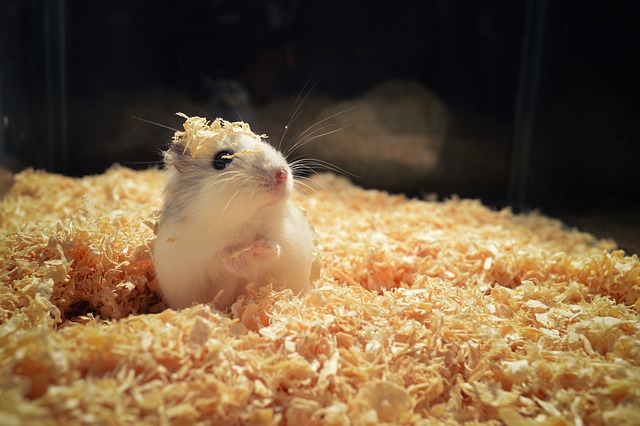
When choosing between a hamster and a rabbit as a pet, it’s important to consider their distinct personalities and interaction styles. While both animals can make wonderful companions, they exhibit notable differences in temperament and sociability. Let’s explore the unique characteristics of hamsters and rabbits to help you determine which pet may be a better fit for your lifestyle and preferences.
Hamsters: Independent and Solitary
Hamsters are known for their independent nature and are generally content living alone. These small rodents are crepuscular, meaning they are most active during dawn and dusk. As a result, they may not always be available for interaction during the day when their owners are most active.
While hamsters can form bonds with their owners, they typically do not crave constant attention or handling. They are often more interested in exploring their habitat and engaging with their toys and surroundings. Some hamsters may even become stressed or agitated if handled excessively or inappropriately.
It’s important to note that hamsters have individual personalities, and some may be more sociable than others. However, in general, they are better suited for individuals who appreciate a pet with a more independent temperament and do not require frequent interaction.
Rabbits: Social and Affectionate
In contrast to hamsters, rabbits are highly social animals that thrive on interaction and companionship. They are naturally curious, playful, and affectionate, making them engaging pets for those who seek a more interactive relationship with their animal companion.
Rabbits often enjoy the company of their owners and can form strong bonds with them. They appreciate attention, petting, and even cuddling once they feel comfortable and trust their human companions. Many rabbits will happily sit beside their owners, follow them around, or come when called.
However, it’s crucial to remember that rabbits have individual personalities, and some may be more reserved or shy than others. They may require patience and gentle encouragement to warm up to human interaction. Additionally, rabbits can become stressed or frightened if handled improperly or exposed to loud noises or sudden movements.
Interaction and Bonding: Time and Effort Required
When considering the interaction and bonding aspects of hamsters and rabbits, it’s essential to factor in the time and effort required to build a relationship with each pet.
Hamsters, being more independent, may not demand as much daily interaction as rabbits. They are generally content with short periods of handling and playtime, as long as their basic needs are met, and their habitat is appropriately enriched.
On the other hand, rabbits require more consistent interaction and attention to thrive. They benefit from daily playtime, socialization, and opportunities to explore outside their enclosure under supervision. Building a strong bond with a rabbit often involves spending quality time together, offering treats, and engaging in gentle petting and grooming sessions.
Conclusion: Matching Your Lifestyle and Expectations
When deciding between a hamster and a rabbit based on temperament and interaction, it’s crucial to consider your own lifestyle and expectations for a pet. If you prefer a more independent companion that doesn’t require frequent handling or attention, a hamster may be a suitable choice. Their solitary nature and contentment with solo play can make them a good fit for busy individuals or those who appreciate a low-maintenance pet.
Conversely, if you are looking for a more social and affectionate pet that thrives on interaction and companionship, a rabbit may be a better match. Their playful and curious nature can provide endless entertainment and opportunities for bonding. However, it’s important to be prepared to dedicate time and effort to socializing and interacting with your rabbit daily.
Ultimately, the choice between a hamster and a rabbit based on temperament and interaction depends on your personal preferences, lifestyle, and the level of engagement you seek in a pet. By carefully considering the unique personalities and needs of each animal, you can make an informed decision that aligns with your expectations and ensures a fulfilling relationship with your chosen companion.
Cost and Maintenance: Evaluating the Financial and Time Commitments of Owning Hamsters and Rabbits
When deciding between a hamster and a rabbit as a pet, it’s crucial to consider the costs and maintenance requirements associated with each animal. While both can make wonderful companions, they have distinct needs that impact the financial and time commitments involved in their care. Let’s explore the expenses and upkeep necessary for hamsters and rabbits to help you make an informed decision.
Initial Costs: Setup and Supplies
The initial costs of setting up a suitable living environment for your pet can vary significantly between hamsters and rabbits.
For hamsters, you’ll need to purchase a cage or habitat, bedding, food and water dishes, toys, and an exercise wheel. The average cost of a hamster cage setup can range from $50 to $150, depending on the size and complexity of the habitat.
Rabbits, on the other hand, require a more substantial investment in their living space. A proper rabbit enclosure, such as a spacious indoor cage or a dedicated room, can cost anywhere from $100 to $500 or more. Additionally, you’ll need to purchase bedding, food and water bowls, toys, and a litter box for training.
Ongoing Expenses: Food, Bedding, and Healthcare
Beyond the initial setup costs, it’s important to consider the ongoing expenses of feeding and caring for your pet.
Hamsters have relatively low food costs, as they consume small amounts of commercial hamster pellets, fresh vegetables, and occasional treats. A bag of hamster food typically lasts several months and can cost around $10 to $20. Bedding, such as wood shavings or paper-based substrates, will need to be replaced regularly and can cost $5 to $15 per month.
Rabbits have higher food expenses due to their larger size and specific dietary requirements. They need a balanced diet consisting of hay, fresh vegetables, and a limited number of pellets. Hay, which should make up the majority of their diet, can cost $10 to $30 per month. Rabbit pellets and fresh produce will add another $10 to $20 to the monthly food bill. Bedding and litter for rabbits can cost around $15 to $30 per month.
Both hamsters and rabbits require regular veterinary check-ups and may need occasional medical treatment. Hamsters tend to have lower healthcare costs, with annual check-ups ranging from $30 to $50. Rabbits, being larger animals, may have higher veterinary expenses, with annual check-ups costing $50 to $100 or more. It’s important to budget for unexpected medical expenses that may arise throughout your pet’s lifetime.
Time Commitment: Daily Care and Interaction
In addition to financial considerations, it’s crucial to evaluate the time commitment required for the daily care and interaction of hamsters and rabbits.
Hamsters are relatively low-maintenance pets when it comes to daily care. They need fresh food and water, and their cage should be spot-cleaned daily, with a full bedding change once a week. Hamsters also benefit from daily interaction, but they are content with short periods of handling or playtime outside their cage.
Rabbits, in comparison, require more extensive daily care. They need fresh hay, vegetables, and clean water daily, and their litter box should be scooped or changed frequently. Rabbits also require daily exercise and interaction, which can involve supervised playtime outside their enclosure. Grooming, such as brushing their coat and trimming their nails, is also necessary on a regular basis.
Conclusion: Balancing Costs and Commitment
When choosing between a hamster and a rabbit, it’s essential to consider your financial budget and the time you can dedicate to your pet’s care and interaction.
Hamsters have lower initial setup costs, ongoing expenses, and generally require less daily maintenance compared to rabbits. They can be a more affordable and low-maintenance option for those with limited financial resources or busy schedules.
Rabbits, while offering more opportunities for interaction and companionship, come with higher costs and a greater time commitment. They need a larger living space, a more varied diet, and more extensive daily care and interaction.
Ultimately, the decision between a hamster and a rabbit should be based on your financial ability to provide for their needs and the time you can allocate to their care and well-being. By carefully evaluating the costs and maintenance requirements of each pet, you can make a responsible choice that aligns with your resources and lifestyle, ensuring a happy and healthy life for your chosen companion.
Lifespan and Health Considerations: Exploring the Longevity and Common Health Issues of Hamsters and Rabbits
When deciding between a hamster and a rabbit as a pet, it’s important to consider their lifespans and potential health issues. Understanding the longevity and common health concerns of each species can help you make an informed decision and prepare for the long-term commitment of pet ownership. Let’s delve into the lifespan and health aspects of hamsters and rabbits.
Lifespan: How Long Do Hamsters and Rabbits Live?
One of the key differences between hamsters and rabbits is their expected lifespan.
Hamsters have a relatively short lifespan compared to other pets. On average, hamsters live between 2 to 3 years, with some species, such as the Roborovski hamster, potentially reaching 4 years. While they may not be long-term companions, hamsters can still provide joy and companionship during their shorter lives.
Rabbits, on the other hand, have a significantly longer lifespan. With proper care and a healthy environment, pet rabbits can live between 8 to 12 years, with some even reaching their late teens. This means that owning a rabbit is a long-term commitment, requiring dedication and resources for their care over an extended period.
Common Health Issues: What to Watch Out For
Both hamsters and rabbits are susceptible to certain health problems that potential owners should be aware of.
Hamsters are prone to several health issues, including:
- Respiratory infections: Hamsters have sensitive respiratory systems and can develop infections due to poor ventilation, dusty bedding, or exposure to drafts.
- Dental problems: Overgrown teeth can cause difficulty eating and other dental issues in hamsters, requiring regular tooth trimming.
- Wet tail: This is a serious bacterial infection that causes diarrhea and can be fatal if left untreated.
- Tumors: Hamsters are susceptible to various types of tumors, particularly as they age.
Rabbits also face a range of potential health concerns, including:
- Gastrointestinal stasis: This life-threatening condition occurs when a rabbit’s digestive system slows down or stops, requiring immediate veterinary attention.
- Dental problems: Rabbits’ teeth grow continuously, and if not worn down properly through a balanced diet and chewing, they can develop painful overgrowth and dental issues.
- Ear infections: Rabbits are prone to ear infections, which can be caused by bacteria, mites, or injury.
- Urinary tract issues: Bladder sludge, stones, or infections can occur in rabbits, particularly if they have an improper diet or limited water intake.
Preventive Care and Veterinary Visits
Regular preventive care and veterinary check-ups are essential for maintaining the health and well-being of both hamsters and rabbits.
Hamsters should have annual veterinary check-ups to assess their overall health, address any concerns, and receive necessary vaccinations or treatments. Owners should also monitor their hamster’s behavior, appetite, and appearance for signs of illness or distress.
Rabbits require more frequent veterinary visits, typically every six months to a year, for health check-ups, dental examinations, and preventive care. Rabbits also benefit from being spayed or neutered, which can help prevent reproductive cancers and behavioral issues.
Conclusion: Considering Longevity and Health in Your Pet Choice
When choosing between a hamster and a rabbit, it’s crucial to consider their lifespans and potential health issues. Hamsters have a shorter lifespan and may be a better choice for those who prefer a shorter-term commitment or are unsure about their long-term living situation. However, their potential health issues still require attentive care and veterinary visits.
Rabbits, with their longer lifespans, are a better fit for those prepared for a long-term commitment and have the resources to provide care over several years. While they may have more potential health concerns, regular preventive care and prompt attention to any issues can help ensure a healthy and happy life for your rabbit.

Ultimately, the decision between a hamster and a rabbit should take into account your ability to provide the necessary care and attention throughout their respective lifespans, as well as your readiness to address any potential health issues that may arise. By carefully considering the longevity and health aspects of each pet, you can make a responsible choice that ensures the well-being of your chosen companion for years to come.

